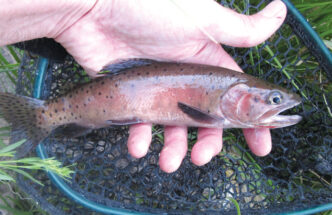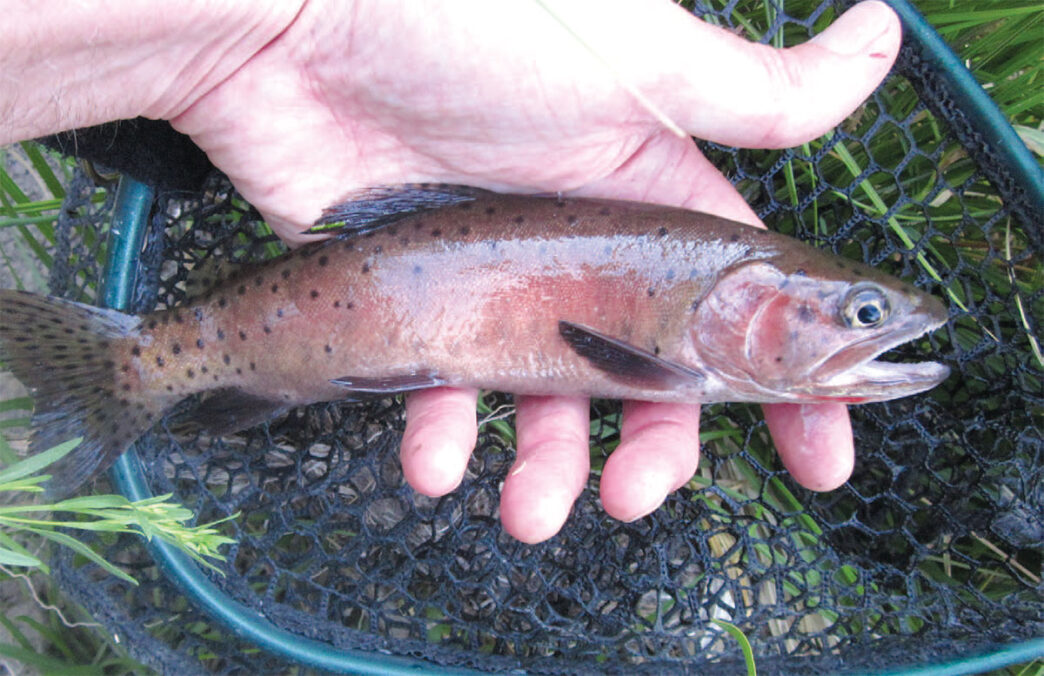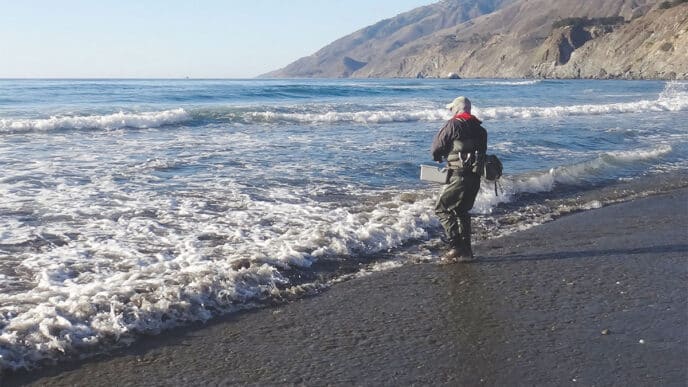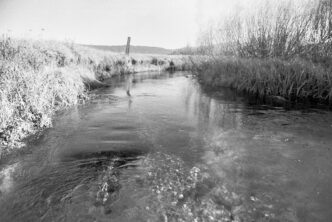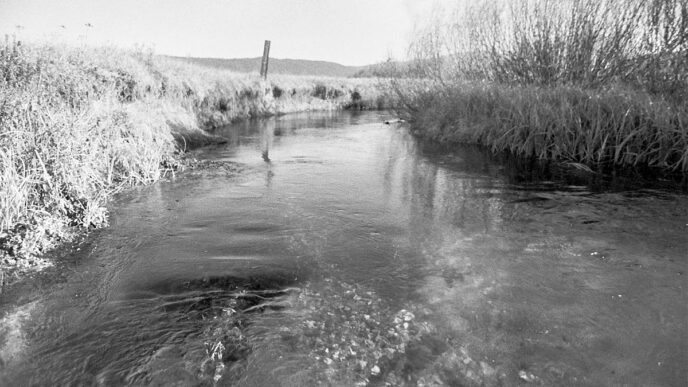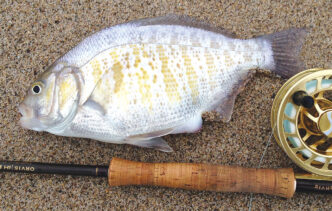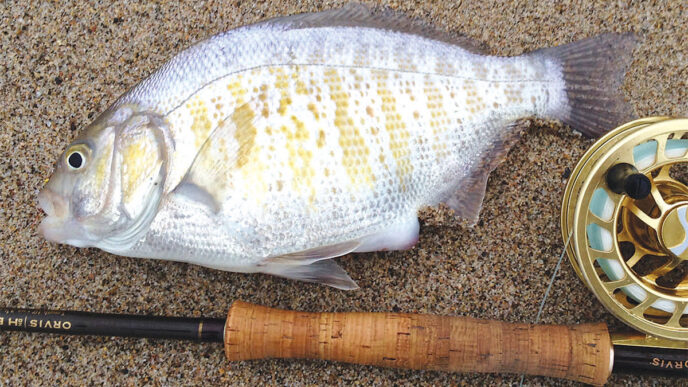The American West is uniquely blessed as the native territory of over twenty-five forms of trout that include the steelhead of the Northwest, the goldens of the southern Sierra, the inland redbands of the northern basins, the Gila trout of the Southwest, and at the heart of the region, the iconic cutthroat, with a rich family of subspecies. It’s a remarkable ichthyological landscape, the product of geology and time.
The West is also the province of four major certification programs for anglers interested in native salmonids. Three of these are state-sponsored; the fourth is the Federation of Fly Fishers Cuttcatch award. They require landing and photographing native fish in their native range within the borders of the respective state, the Cuttcatch excepted. The state-sponsored slams are the Wyoming Cuttslam, the California Heritage Trout Challenge (HTC), and the Nevada Native Fish-Slam.
The two longest-standing slams, the Cuttslam and Cuttcatch, by definition are focused solely on cutthroat trout. This is appropriate because, historically, cutthroats dominated the waterways of the vast Intermountain West. (What a difference a century and half of development and the introduction of nonnative species makes.) Wyoming has granted nearly one thousand Cuttslam certificates, while the Cuttcatch trails significantly, with approximately thirty FFF awards to date.
During this second decade of the twenty-first century, we should consider ourselves fortunate that 12 of 14 cutthroat subspecies remain. All are threatened to varying degrees: by outright habitat loss or degradation, nonnative competition, genetic hybridization, or some combination thereof. Several are on the Endangered Species List and most have been reduced to a fraction of their historical range.

Additional species are covered by the two newest slams. The California HTC includes rainbow, redband, golden, and cutthroat trout. California boasts a diverse collection of native trout, 12 in all. The HTC grants a certificate to anyone who catches 6 of these. Over two hundred HTC certificates have been granted to date. Additionally, California also offers an HTC “Masters” certificate for anglers catching all 12 eligible trout. This is presently problematic due to the habitat situation of the Paiute cutthroat, a Lahontan relative. There is no legally fishable water in which the trout reside. Hence, until restoration efforts succeed, anglers must try their luck at landing a “washover” fish below the barrier falls that isolate their habitat.
The newly instituted Nevada Native Fish-Slam expands the taxonomic breadth of the challenge by including the bull trout (a char, genus Salvelinus) and the mountain whitefish (genus Prosopium), as well as a redband trout and the cutthroats. This inclusiveness is welcome. The whitefish is a highly underrated game fish. Still, in its inaugural year (2012), the number of Nevada certificates issued was in the single digits.
A common purpose of these grand slams is to educate anglers about the native’s watersheds while building a constituency for preservation. The slams don’t have time limitations or catch-size requirements. They generally promote catch-and-release angling (it’s very often the regulation on eligible waters), but the Cuttcatch is the only one to require it. Similarly, the Cuttcatch is alone in requiring the use of artificial flies. (Again, it is often a regulation on eligible waters for all the slams).
The fish eligible for each slam and the number needed to qualify for a certificate are shown in Table 1. (Note that although the west slope cutthroat is native to Wyoming, it is not included in their slam because of its limited habit within a sensitive area of Yellowstone National Park.) The HTC and Cuttslam can be repeated once per calendar year. However, the Native Fish-Slam is awarded only once per lifetime.
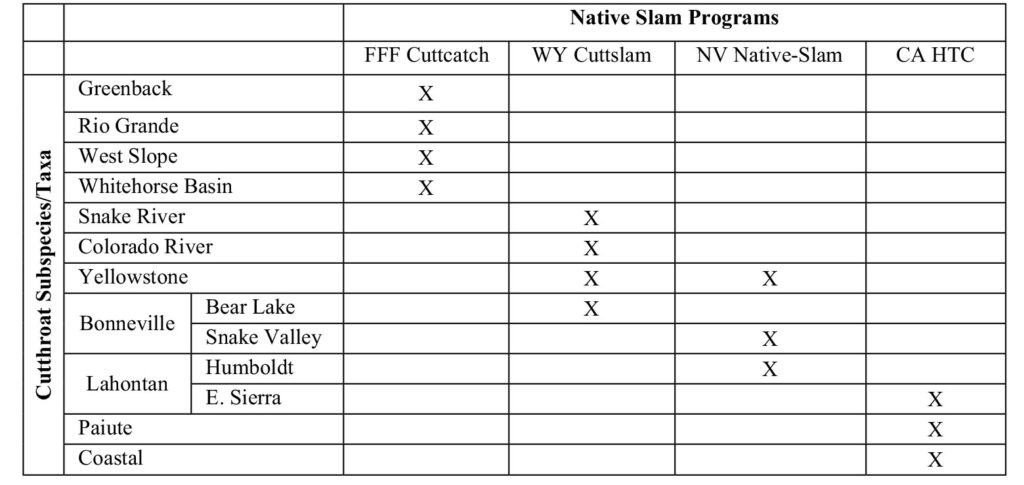
As shown in Table 2, The FFF’s Cuttcatch requirements can be satisfied without duplicating any cutthroat subspecies from other slams and thus includes cutthroats not eligible to satisfy the requirements of the California, Nevada, and Wyoming programs. In this respect, the FFF Cuttcatch nicely complements the other slams. Slam fish duplication was avoided by the author to insure a unique fishing experience as well as to guarantee comparatively unique certificates.
There is also some overlap in the cutthroat subspecies covered by the different state-sponsored slams, but those can be mitigated by targeting different distinct populations, or taxa, within a species. Indeed, the perspective you gain from targeting differing taxa is a prime benefit of participating in multiple slams. For example, the Bonneville cutthroat is required for both the Cuttslam and the Native FishSlam. However, present-day Wyoming and Nevada are on opposite sides of ancient Lake Bonneville. They hold populations that have been separated by millennia and are thus distinct. As the photographs to the right indicate, the Bonneville cutthroat from the Snake Valley watershed of eastern Nevada differs in appearance from the Bear Lake cutthroat from Salt Creek, a watershed hundreds of miles northeast in western Wyoming. Their common ancestors once lived in the vast waters of Lake Bonneville, which is now substantially desiccated. The Great Salt Lake is a remnant.
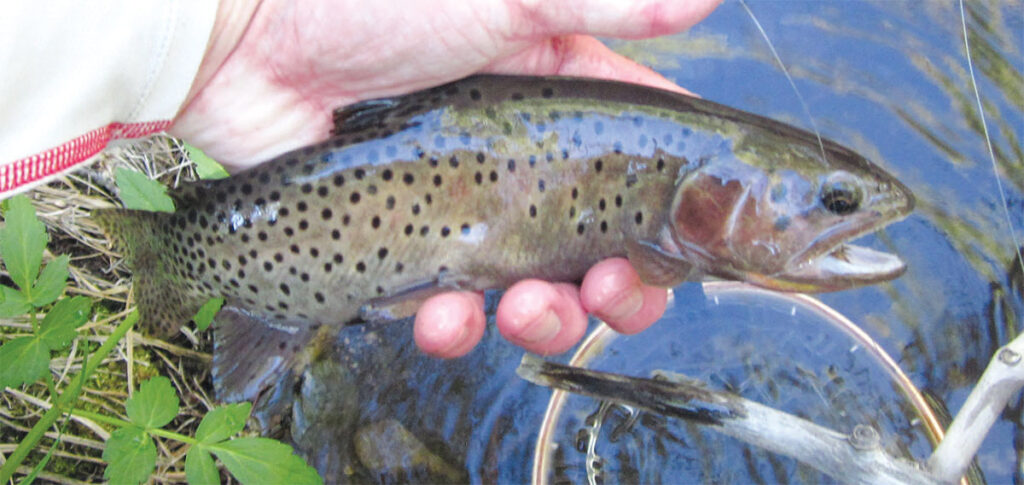
Similarly, the Lahontan cutthroat is required for the Native Fish-Slam and is eligible for both the Cuttcatch and the HTC. All three slams can be satisfied via different taxa: the eastern Sierra population (the western edge of ancient Lake Lahontan) for the HTC, the Humboldt cutthroat (classified as simply a Lahontan by the Nevada Department of Wildlife) on the eastern edge of ancient Lake Lahontan, and the Whitehorse basin cutthroat (classified as simply a Lahontan by the Oregon Fish and Wildlife) on the northern shore of ancient Lake Lahontan. Again, these are populations that have been separated for millennia.
One reason to participate in a slam, disheartening though it may be, is to experience these fish prior to their possible extinction. In completing the Cuttcatch, the author fished Willow Creek of the Whitehorse basin watershed of southwestern Oregon. This is a critical riparian environment in the high-desert hills. Several weeks after the visit the devastating Holloway Fire substantially destroyed that habitat, which had been carefully restored over decades. Fishing in the area is suspended, and the future of the taxa is in question.
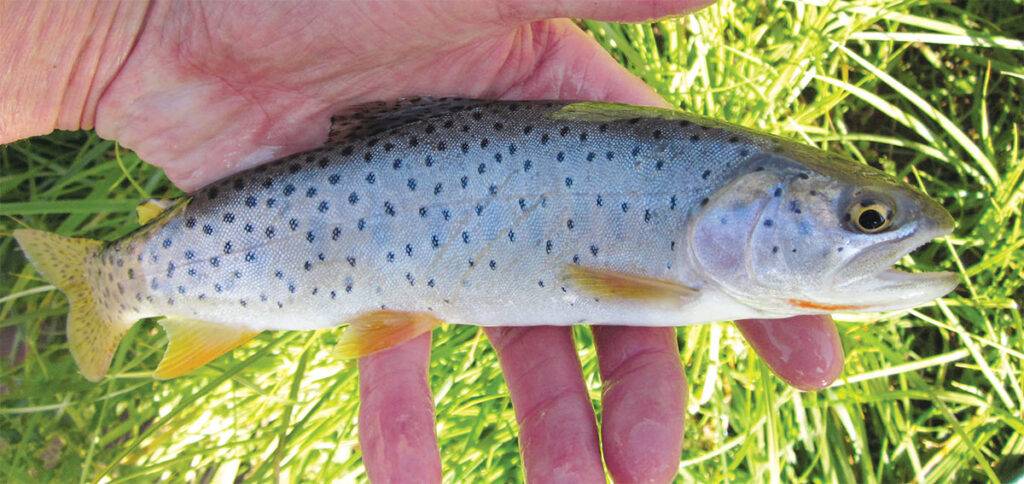
The pursuit of these native fish is rewarding and deeply enriching. The angler learns of areas such as those of the Tri-Divide region of southwestern Wyoming, which contains a namesake three separate watersheds, relatively close to each other, each with a unique native cutthroat trout. In the same vein, one may explore the headwaters of the South Fork of the Kern River in the southern Sierra, where, after hiking for miles to a small tributary, one can catch a golden trout so strikingly luminescent that it appears to have been recently painted.

All of the actual grand slam certificates are well-formatted and attractive. They not only provide a reminder of the adventures that brought them to you (and the adventures are essentially guaranteed), but of what’s worth fighting for in terms of our natural heritage. Both the Cuttslam and the HTC include drawings of the trout. The HTC’s are by the renowned artist Joseph Tomelleri and are customized for the individual’s particular catches. Indeed, the drawing of the Lahontan cutthroat is even customized to reflect where it was caught (river versus lake resident). This allows for two full certificates without duplicate drawings, even in the absence of the Paiute cutthroat. With the exception of the Cuttcatch, all certificates list the trout names and associated details: date caught, location, or both.
The wildlife professionals administering these programs are helpful and knowledgeable. Don’t hesitate to contact them, and please thank them for their service. All the slams have a Web presence with detailed information (Table 3).
If you would like to contact Russell Hershbarger about his experiences with these slams, e-mail him at rah.cast@comcast.net.



